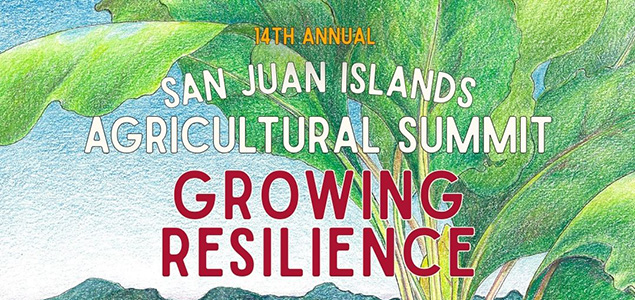— by Cathy Vierthaler, Island Business Services —
You have probably heard by now about the Equifax data breach affecting more than half the US population. Here are some concrete steps to protect your credit. It is important for all of us to protect our credit, not just the wealthy. Protecting your credit is an important step in protecting your identity. A stolen identity can ruin your ability to get a credit card or loan, but it can also impact your ability to rent a place to live, get a job or buy a car. Poor credit scores translate into higher interest rates and therefore higher payments on loans that you do have.
You may be hearing the term Security Freeze. A credit freeze or security freeze is a method by which a consumer blocks access to a credit report. The primary purpose is to prevent lenders from accessing someone’s report, which prohibits identity thieves from getting credit in the consumer’s name, according to the Federal Trade Commission.
The consumer is still able to open new credit accounts and take other actions resulting in credit checks, but they must temporarily remove the freeze to grant lenders access, reports the FTC. The consumer can also still receive a free annual credit report. While a deterrent, credit freezes do not prevent thieves from gaining access to existing accounts.
To protect yourself you should initiate a freeze at all three credit reporting agencies, Equifax, Experian and TransUnion.
I suggest that you follow these steps for all adults in your household. There are tools to protect your minor children’s credit as well. Please do a web search for “minor credit freeze” and include the name of the credit reporting agency to find out how to place a freeze.
- Start at equifaxsecurity2017.com. You can “Check Potential Impact”, but even if it says that your personal information was not impacted, it is a good idea to proceed with these protective steps.
- Click the “Enroll” button. There is no charge for enrolling in the Equifax TrustedID Premier product for now. Once completed you should receive an email.
- Request a Security Freeze freeze.equifax.com/Freeze/jsp/SFF_PersonalIDInfo.jsp Keep the PIN that you receive so that you can lift the freeze when you need to access it. The Equifax website has been overloaded, so it may take several attempts to get the freeze in place. Try on different days, and at different times. There is no charge for this service.
- Move on to Experian experian.com/ncaconline/freeze. There may be a fee for this service; in Washington it’s $11.01. You will get a PIN, print the page and keep it in a safe place. If you aren’t near a printer you have the option to email the information to yourself.
- Now to TransUnion transunion.com. Click on My Free Identity Protection. With this free product you will be able to lock and unlock your credit by logging in to your account and clicking a button.
- Another important step to protecting your credit is to check your credit report and make sure it’s accurate. You are guaranteed one free annual credit report from each of the credit agencies. There are several websites that you can check from, and checking your credit report will not impact your credit.
Again, due to the Equifax breach this is a high traffic time to take these important steps, but it will help to safeguard your identity and your valuable credit. I was able to easily set up and freeze my accounts with TransUnion and Experian. I am continuing to get error messages on the Equifax website. I’ll keep trying every day, and I encourage you to do the same.
For more information click here and click again to enlarge: Experian – Common questions to see Experian answers to questions about security freezes.
**If you are reading theOrcasonian for free, thank your fellow islanders. If you would like to support theOrcasonian CLICK HERE to set your modestly-priced, voluntary subscription. Otherwise, no worries; we’re happy to share with you.**








Thanks for this information.
Thank you, Cathy. It’s good to see these recommendations from a trusted, local adviser. I’ve seen this same advice from other sources, and couldn’t be sure if they were legitimate or not. But, I have had a nagging question as to whether it’s safe to go to Equifax and request anything of that agency? It was hacked, so how could a consumer be certain that they were dealing with an agency that can protect their data? Kind of a conundrum… Thank you again!
Yes, trust is waning with these huge agencies. Unfortunately credit and credit reports are part of our modern life. It’s also important to check your bank and credit card statements every month for accuracy.
Cathy,
Your editorial is an important first step in alerting islanders to ways they may potentially protect themselves in the event of illicit use of stolen information, but these steps are probably not sufficient.
The reality is that for some unknown percentage of the population (“up to 50% of the population” has not been verified, no one has released a verified figure yet) their identity credentials have been stolen. Miscreants have other ways to profit from stolen consumer data than simply opening credit card accounts in the names stolen in the hack.
Security experts at the Gartner Group have stated that fewer than 5% of financial crimes can be prevented by a credit freeze.
I suggest additional steps including placing fraud alerts on credit card accounts, active monitoring of online banking and credit card statements, and periodically reviewing credit reports from all three of the major credit agencies. Everyone is entitled to one free credit card report per year. You can request a report annually for free from AnnualCreditReprt.com.
Additionally, since social security numbers may have been stolen, every taxpayer may wish to file early to guard against fraudulent filing of tax returns.
Taken with Cathy’s suggestions, this is a partial list of steps that may be taken to monitor one’s credit profile, but in no way are these steps a guarantee against identity theft. Caveat emptor should probably be the 21st century slogan once again.
Paula Treneer
Idun Partners, financial education services
Thank you Paula for your additional suggestions. We must all be vigilant in protecting our credit.